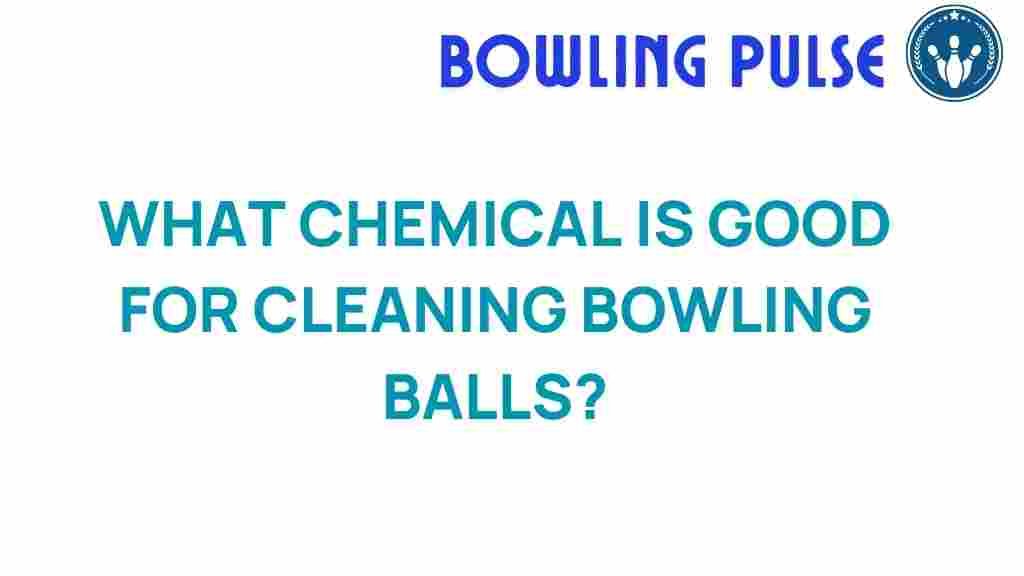Bowling Ball Cleaning: The Key to Optimal Maintenance
Maintaining your bowling ball is crucial for ensuring its longevity and enhancing your performance on the lanes. Just like any other piece of sports equipment, a bowling ball requires regular care and attention. In this article, we will unveil the best chemicals for bowling ball maintenance, explore effective cleaning techniques, and provide tips for performance enhancement. Whether you are a casual bowler or a seasoned professional, understanding the importance of bowling ball cleaning is essential for achieving your best game.
The Importance of Bowling Ball Maintenance
Bowling balls accumulate oil and dirt from the lanes over time, which can negatively impact their performance. Regular maintenance helps to:
- Improve grip and control
- Enhance ball reaction and performance
- Extend the lifespan of your bowling ball
- Maintain a clean and polished appearance
Incorporating proper bowling care into your routine can significantly impact your game. Here, we will discuss various chemical solutions and cleaning techniques to keep your bowling ball in top shape.
Choosing the Right Chemical Solutions
When it comes to bowling ball cleaning, not all chemicals are created equal. Here are some of the best chemical solutions available:
- Bowling Ball Cleaners: These are specifically formulated to remove oil, dirt, and grime from the surface of bowling balls. Look for products that are non-abrasive and safe for the ball material.
- Activator Cleaners: These cleaners contain solvents that penetrate the ball’s surface, breaking down oils and contaminants effectively.
- Polishing Compounds: After cleaning, a polishing compound can restore the ball’s shine, improving its appearance and performance.
- Surface Preparation Solutions: These products prepare the ball’s surface for optimal performance by ensuring it is free of oils and debris.
Popular brands like Storm and Brunswick offer a variety of products tailored to bowling ball maintenance. Always read the labels and instructions to ensure compatibility with your specific ball type.
Step-by-Step Bowling Ball Cleaning Process
Now that you know about the best chemical solutions, let’s dive into a step-by-step cleaning process to ensure your bowling ball remains in excellent condition:
Step 1: Gather Your Supplies
Before you start cleaning, gather the following items:
- Bowling ball cleaner
- Microfiber cloths
- Bowl of warm water (optional)
- Soft brush (optional)
- Polishing compound (if needed)
Step 2: Apply the Cleaner
Spray the bowling ball cleaner onto the surface of the ball, ensuring even coverage. If using a liquid cleaner, apply it directly to the microfiber cloth first.
Step 3: Wipe Down the Ball
Use a microfiber cloth to gently wipe the ball in a circular motion. This technique helps to lift off the dirt and oil.
Step 4: Use a Soft Brush for Stubborn Spots
If you encounter any stubborn spots, use a soft brush to gently scrub those areas. Be careful not to use anything too abrasive, as this can damage the ball’s surface.
Step 5: Rinse (if necessary)
If you used a cleaner that requires rinsing, dip the ball in a bowl of warm water or rinse it under running water. Make sure to dry it thoroughly afterward.
Step 6: Polish the Ball
If desired, apply a polishing compound to restore the ball’s shine. Follow the manufacturer’s instructions for application and buffing.
Cleaning Techniques for Different Ball Types
Different bowling balls may require specific cleaning techniques. Here are some tips based on the type of ball:
Reactive Resin Balls
Reactive resin balls are sensitive to oil and require regular cleaning. Use a specialized bowling ball cleaner designed for these types. Avoid using household cleaners, as they can damage the surface.
Urethane Balls
Urethane balls are less porous than reactive resin, but they still benefit from regular cleaning. Use a gentle cleaner and avoid abrasive materials.
Plastic Balls
Plastic balls are generally easier to clean. A simple wipe with a bowling ball cleaner and a microfiber cloth should suffice.
Troubleshooting Common Issues
Even with regular maintenance, you may encounter issues with your bowling ball. Here are some common problems and troubleshooting tips:
Reduced Hook or Reaction
If you notice that your ball is not hooking as much as it used to, it may be time for a deep clean. Ensure you are using the right chemicals and follow the cleaning process closely.
Ball Surface Damage
Check for scratches or scuffs on the ball’s surface. If the damage is minor, polishing may restore its appearance. For deeper scratches, consult a professional for resurfacing options.
Persistent Odor
If your bowling ball has developed an odor, it may be due to trapped moisture or debris. Clean it thoroughly and ensure it is completely dry before storing it. Consider using a specialized odor eliminator designed for sports equipment.
Storing Your Bowling Ball
Proper storage is just as important as cleaning in maintaining your bowling ball’s longevity. Here are some tips for storing your ball:
- Keep it in a cool, dry place away from direct sunlight.
- Use a bowling ball bag with adequate padding to prevent damage during transport.
- Avoid storing your ball in extreme temperatures, as this can affect the material.
Conclusion: Elevate Your Game with Proper Bowling Care
In conclusion, proper bowling ball cleaning and maintenance are essential for anyone looking to enhance their performance on the lanes. By using the right chemical solutions and following effective cleaning techniques, you can significantly improve your ball’s reaction and extend its longevity. Remember to troubleshoot common issues and store your bowling ball properly to maintain its condition. With consistent care, your bowling ball will continue to be a reliable partner on your journey to bowling excellence.
For more tips on sports equipment maintenance, check out our other articles on sports care and performance enhancement.
This article is in the category Equipment and created by BowlingPulse Team
